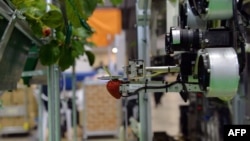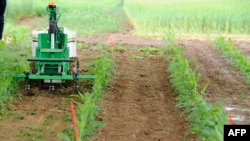A new U.N. report finds agricultural automation can boost global food production and be a boon for small-scale farmers in developing countries.
The U.N. Food and Agriculture Organization, FAO, has just released The State of Food and Agriculture 2022 report. The report’s authors said automation is rapidly changing the face of agriculture. New technologies, they say, are quickly leaving behind some of the old larger-type tractors and large machinery in ways that could benefit small holders in developing countries.
Parallels can be drawn with the introduction of cellphones. The World Bank, among other observers, notes African and other developing countries can harness digital technologies to boost their economies by advancing from landlines to smartphones.
FAO said automation can play an important role in making food production more efficient and more environmentally friendly.
Chief FAO economist Maximo Torero said many emerging technologies would have been unimaginable years ago. He cited as examples fruit-picking robots that use artificial intelligence and sensors that monitor plants and animals.
“Automation allows agriculture to be more productive, efficient, resilient, and sustainable and can improve working conditions,” Torero said. “However, as with any technological change, automation also implies disruption to the agricultural systems. The risk is that the automation could exacerbate inequalities if we are not careful on how it is being done and developed and deployed.”
The report looks at 27 case studies from all over the world. They represent technologies at different stages of readiness suitable for large or small agricultural producers of varying levels of income.
Torero said the report investigates the drivers of these technologies and identifies barriers preventing their adoption, particularly by small-scale producers. The report, he said, also looks at one of the most common concerns about automation — that it creates unemployment.
“While it concludes that such fears are overblown, it acknowledges that agricultural automation can lead to unemployment in places where rural labor is abundant, and wages are low,” he said. “It is important to understand that in a continent like sub-Saharan Africa, where there is an enormous amount of youth population, we can build the skill sets of these people to be able to have access to these technologies.”
In areas where cheap labor is abundant, the FAO urges policymakers to avoid subsidizing automation while creating an enabling environment for its adoption. At the same time, the report said governments should provide social protection to the least skilled workers who are likely to lose their jobs during the transition.








